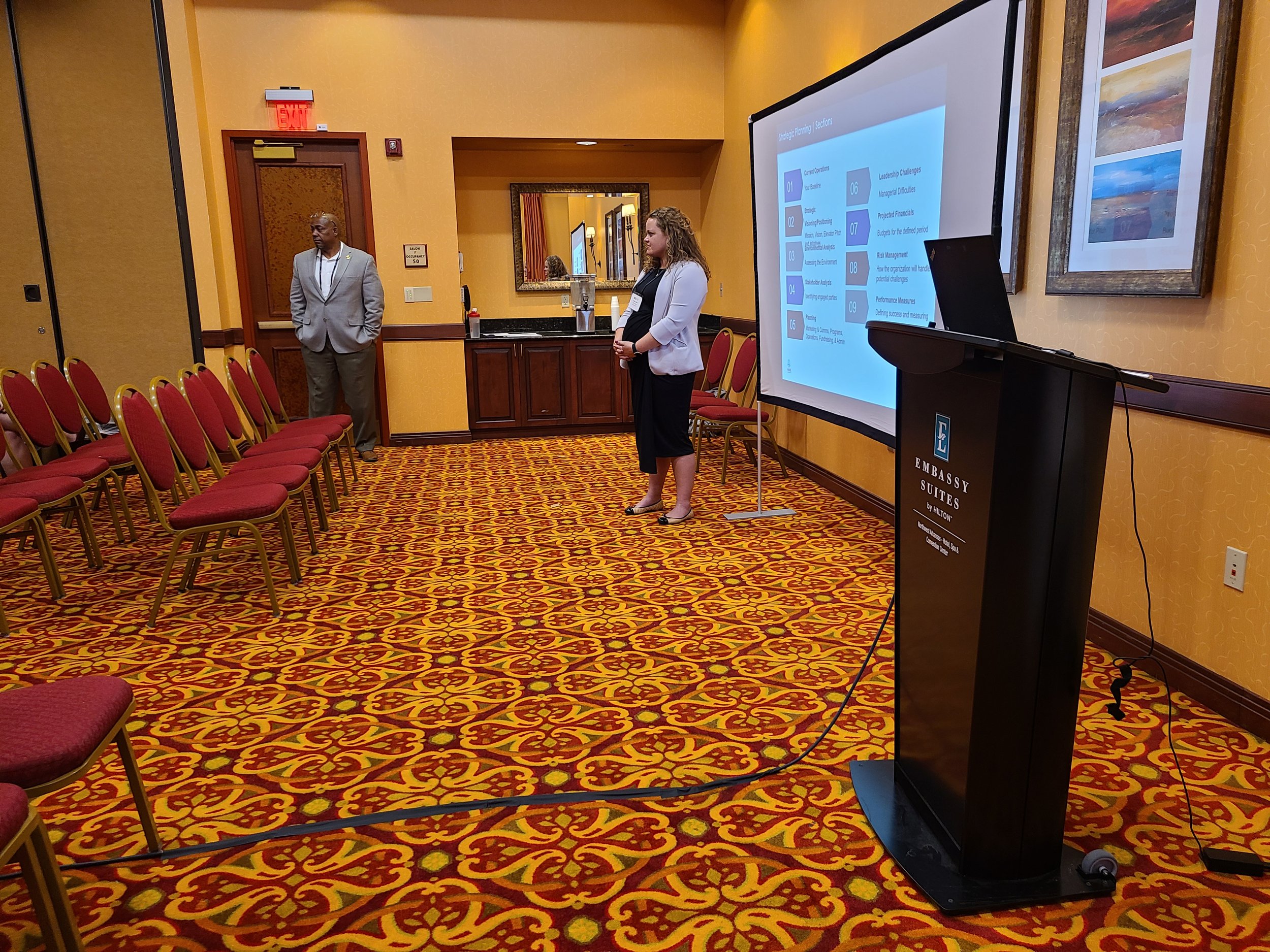Boost Your Fundraising by Showing Donors the ROI
When it comes to nonprofit fundraising, many individual donors carry the weight of supporting our sector. You may think that corporations provide more donations to nonprofits than individual donors, but that is not the case. So far in 2021, individual donors make up 71% of all donations to nonprofits. A major, if not the key reason donors give, is because they were clearly informed of the exact impact of their dollars. When donors know what their dollar will do, they are highly motivated to give in order to achieve that impact. They feel a greater connection to the cause and the action of donating. Explaining this to donors makes the impact real and within reach. They are not just throwing their dollars into a nebulous process, hoping it will have a positive impact. The best way to communicate this to donors is to express the ROI on donated dollars as well as dollars spent to get donations. A high ROI on donated dollars details the work that your organization is accomplishing. Similarly, a high ROI on dollars spent to fundraise will show that you are not just using all your donor’s gifts to break even getting more gifts. Let’s take a look at some simple metrics to start tracking and using in your organization…
Get the Numbers
The first step to using Return on Investment (ROI) to increase donations is to understand the ROI. To track ROI and then express it to donors you must be organized. Track your development profits and expenses in order to understand and therefore express to donors what is spent on programming versus administrative costs (including getting new donations). That said, track your spending and ROI across all of your departments in order to have all of that data at your fingertips. When looking at your data (particularly program data), the lower the cost per dollar raised the more of an ideal ROI figure you can share with donors, members, and your board. This means that you are efficiently raining money and can spend more on programming for your mission. By tracking your income and expenses you can work toward lowering that cost and exhibiting an ideal ROI when it is reached. With this data, you can express to donors the specific ROI on their investment (donation) in different ways.
Program Efficiency
After you understand your organization’s expenses, you can begin to calculate metrics that you can use to promote fundraising. An important metric to begin with is Program Efficiency. You can calculate program efficiency by dividing your program’s expenses by your total expenses (program expenses/total expenses = program efficiency). With this calculated, you can assess how efficiently your organization is using dollars to achieve your mission. In other words, you can express how donor dollars are being spent. For example, if your organization has $1,000, you want to be able to express that you are spending the greatest amount on programming as possible. If you show donors that $100 goes to programming and $900 to internal expenses, they will not feel like their dollars as much as they should. Donors always want their dollars to go toward programming rather than administrative expenses. Industry professionals know how important it is to keep the lights on and your dedicated staff around, but more programming is the goal. Spending on programming is a very evident way to express to donors the focus of your work. The better you can demonstrate your efficiency the more effectively you can raise money.
ROI on Donations
Similarly, you can calculate the ROI on donations. You can calculate your ROI by dividing your total fundraising expenses by the total dollars you raised in fundraising (total fundraising cost/total dollars raised = donation ROI). By understanding how much your organization has to spend in order to bring in a dollar donation, you can understand your most successful strategies for fundraising (events, donor types, etc.). If you spend $1,000 to get $500 in donations then you are spending $2 for every $1 you receive. Donors are not going to like that metric. The less you spend to get a dollar, the better and the more impressed your donors will be. You can also see whether certain channels are costing your organization money. This metric is incredibly useful for your organization whether it is used across all development or for specific channels. It allows organizations to find what development strategies are most cost-effective and which need refinement. You may not try to sell donors on how little it costs you to fundraise a dollar, but this is nevertheless a highly important metric to be aware of.
Gifts Given/Persons Served
This varies based on the organization and its mission. Organizations can calculate for the goal of expressing how many people they have served or in terms of how many items/units you have served. To do this, divide the number of people served (or similar unit, families, items given, etc.) by a period of time or number of programs (# served = number of people or items/time period or a number of programs). Let’s look at an example. If you are a kitchen serving meals to homeless veterans. You take the number of meals served to people (we will use 1,000) and divide that by the time period you prefer to use. It may be helpful to use multiple time frames to have multiple data points. 1,000 meals over the course of 100 days mean that you served 10 meals a day. Similarly, 10,000 pounds of fruit distributed over 8 weeks breaks down to 1,250 pounds of fruit a week. If you offer programming where you offer free job search help, you can express how many individuals you helped find jobs per programming period (20 jobs found per quarterly job search week). You can do this with volunteer hours, homes built, people sheltered, people treated, pets rescued, and so many more ways. This also helps you see which (if you have more than one) programs are the most efficient and which are lagging behind.
How Do You Share This With Donors?
Storytelling
Use the data to tell a story about your impact. Storytelling is a proven way to engage donors and to make them remember you. Additionally, storytelling tends to evoke a greater response leading to a higher number of donations at a higher gift amount than in cases where storytelling was not used (Data Storytelling). Incorporate your data to show how the generosity of your donors is, in turn, helping those in need.
Link Gift Amounts With Outcomes
With proper record keeping and data calculation, you can attach a cost to everything you do. When you have these numbers at your disposal, you can preselect giving amounts and link them with an outcome in your development outreach. Many nonprofits have suggested donation amounts on mailings, cards, or digital popups. You can attach an outcome to those gift amounts and attract the attention of potential donors. Five dollars is no longer five dollars but rather three meals for the hungry. Maybe twenty dollars pay for a textbook for a student and so on. When donors see the exact outcome of their dollars they connect that outcome directly to their action which is more impactful for them. Especially as your organization grows, smaller donors can feel like their donation is just a drop in the bucket when in fact we all know that every donation counts, especially the combined support of individual donors. It is easy for a donor to say, you’ve raised $5 million this year, what does my $20 matter. Providing outcomes gives them incentive and understanding. Donors like to see their money go to a good cause, so help them by informing them of what their gift can accomplish.
Follow Up
Just like we said before, donors like to know where their money is going. This tip is less data-focused but don’t let that stop you from using the data that’s relevant to your follow-up with donors. Follow-ups will make donors feel special because so often the average donor doesn’t get the VIP look into an organization. That said, with many donors, follow-ups can seem daunting. A few ways to make follow-ups easier and avoid them from being overwhelming is to have a plan and remain organized. Here are a few strategies to employ…
Place donors in groups: it is likely easiest to do this by gift size but other factors could be used as well. Now, for each group, you can plan how to recognize and follow up with donors. Many smaller donors don’t get to see what happens to their dollars so a follow-up that informs them can be incredibly meaningful.
Set up a schedule: This is where remaining organized will make following up with donors less of a challenge. With a communication schedule, you can ensure consistent communication with an appropriate message for each preset group.
Take feedback: Let donors know they have a voice. Accept their thoughts on your communication and follow up as well as how they felt about their donation process. This will make them feel valued, increase their engagement, and positive remarks have a positive impact on your organization.
Feature Data on Your Website
With a set of data turned into digestible numbers, you can feature this data in a prevalent place on your website. This type of data can be turned into a very easy-to-read and powerful marketing tool. Place the info inside columns, on your homepage, on a donate page (of course), or even turn it into a blog. It will add to the composition of your site to better engage visitors and attract new donors. If you have the data, use it and use it everywhere you see fit. If your organization is doing great work and the numbers show it, make sure to let your following know.
This whole strategy starts with detailed accountancy. The attention to detail in your books will help you cut out wasteful spending and calculate ROI data that you can pass on to donors. When your accountants can pass on this data to your development and marketing teams, they now wield an incredibly powerful marketing tool that will attract new or inactive donors. Having ROI data on standby will prove helpful for so many staff members and your organization overall.
NMBL Strategies has worked with nonprofits for years, helping in some of the greatest nonprofit developments of the previous 20+ years. In that time, we’ve raised more than $100 million, developed millions of dollars more in earned income, and most importantly, developed the strategies and insights behind these efforts. Let us bring that experience to your nonprofit today and ensure your financial future is in good hands.












